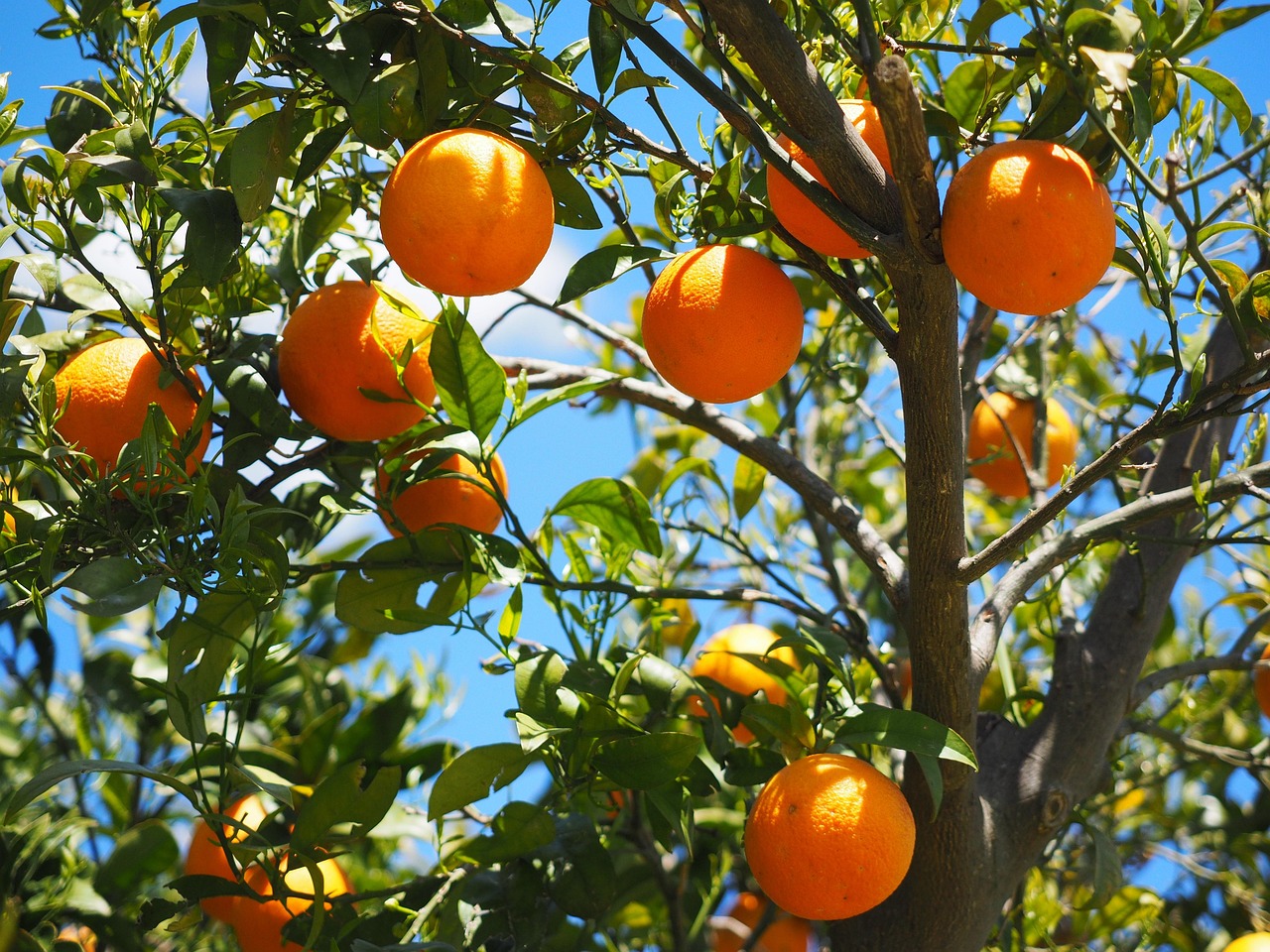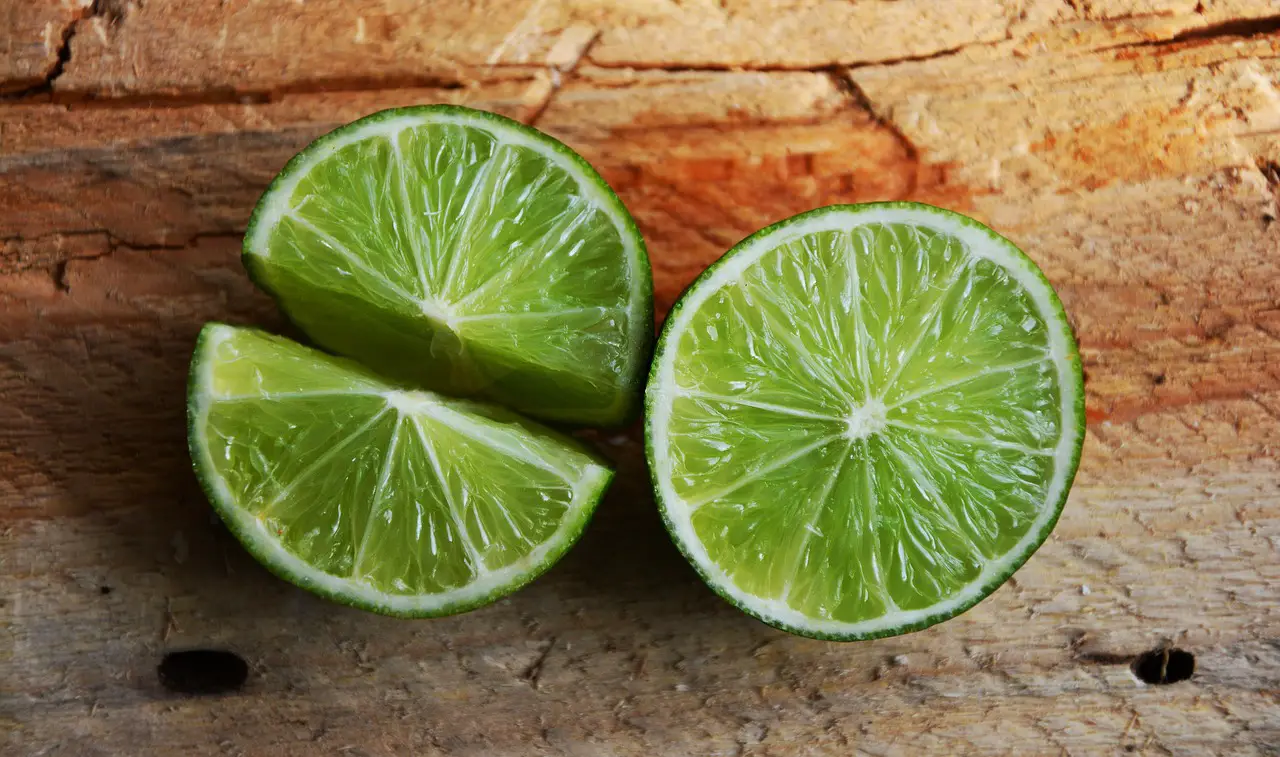Summer pruning of citrus trees in warm regions helps to promote healthy growth, improve fruit quality, and maintain tree shape. This practice, when done correctly, can enhance air circulation and sunlight penetration, leading to better yields.
Citrus trees are a popular choice for home gardens, especially in warm climates. Their vibrant foliage and fragrant blooms make them attractive additions to landscapes. However, to ensure these trees thrive and produce abundant fruit, proper maintenance is essential. One of the most effective ways to maintain the health of citrus trees is through summer pruning.

Summer pruning involves selectively removing certain branches and foliage during the growing season. This technique differs from winter pruning, which is typically performed while the tree is dormant. Summer pruning is crucial in warm regions where citrus trees experience active growth during the warmer months. By understanding the right techniques and timing for summer pruning, gardeners can help their citrus trees flourish.
Benefits of Summer Pruning
There are several key benefits to summer pruning citrus trees. Understanding these advantages can motivate gardeners to incorporate this practice into their routine care of citrus plants.
- Improves Air Circulation: Pruning opens up the canopy of the tree, allowing for better airflow. This reduces the risk of fungal diseases that thrive in humid conditions.
- Enhances Sunlight Exposure: By thinning out excess branches, sunlight can reach more parts of the tree. This helps in producing healthier fruit.
- Encourages New Growth: Removing older, less productive branches stimulates new growth. This can lead to increased fruit production.
- Makes Harvesting Easier: A well-pruned tree is easier to navigate, making it simpler to harvest fruit without damaging the tree.
- Maintains Shape: Pruning helps maintain a desirable shape and size for the tree, which can be aesthetically pleasing in a garden setting.
When to Prune Citrus Trees
The timing of summer pruning is vital for its success. It is generally recommended to prune citrus trees during late spring to early summer. This period corresponds with active growth when the trees are most capable of healing from cuts.

Pruning too late in the season can stimulate new growth that may not harden off before colder weather arrives. This can lead to damage from unexpected temperature drops. Therefore, it is essential to monitor local weather conditions and prune accordingly.
Tools Needed for Summer Pruning
Before starting the pruning process, it is important to gather the necessary tools. The right equipment not only makes the job easier but also ensures clean cuts that promote quick healing.
- Hand Pruners: Ideal for small branches and delicate cuts.
- Loppers: Suitable for thicker branches that are too large for hand pruners.
- Pruning Saw: Useful for larger limbs that need to be removed.
- Safety Gear: Gloves and eye protection are important for personal safety during pruning.
How to Summer Prune Citrus Trees
Proper technique is crucial when pruning citrus trees. Here are steps to follow for effective summer pruning:

- Assess the Tree: Before making any cuts, examine the tree’s structure. Look for dead or diseased branches that need removal.
- Selective Cutting: Focus on thinning out crowded areas. Remove branches that cross over each other or grow inward towards the center of the tree.
- Aim for Balance: Maintain a balanced shape by avoiding excessive cutting on one side. This promotes uniform growth throughout the tree.
- Cuts at an Angle: Make cuts at a slight angle just above a bud or branch. This encourages new growth in the desired direction.
- Cleansing Tools: After finishing, clean your tools with rubbing alcohol to prevent spreading diseases between plants.
Summer pruning can seem daunting at first, but with practice and careful attention, it becomes an integral part of caring for citrus trees. By following these guidelines, gardeners can ensure their trees remain healthy and productive throughout the growing season.
| Pruning Tool | Best Use |
|---|---|
| Hand Pruners | Small branches and delicate cuts |
| Loppers | Thicker branches |
| Pruning Saw | Larger limbs |
| Safety Gear | Personal protection during pruning |
With these tips and information, anyone can confidently approach summer pruning for citrus trees in warm regions. This practice not only improves the health of the trees but also enhances their productivity and beauty in any garden setting.
Common Mistakes in Summer Pruning
Even experienced gardeners can make mistakes when pruning citrus trees. Understanding common pitfalls can help ensure effective pruning that benefits the tree’s health and productivity. Here are some frequent errors to avoid:

- Pruning Too Much: Over-pruning can stress the tree and reduce fruit production. It is important to remove only what is necessary.
- Ignoring Tree Structure: Failing to consider the natural shape of the tree can lead to imbalances. Always aim for a balanced canopy.
- Pruning at the Wrong Time: Cutting branches too late in the season can cause new growth that may not survive the cold. Timing is crucial.
- Not Using Clean Tools: Using dirty tools can spread diseases. Always clean your pruning equipment before use.
- Neglecting Safety: Skipping safety gear can lead to injuries. Always wear gloves and protective eyewear when pruning.
Signs Your Citrus Tree Needs Pruning
Recognizing when to prune your citrus tree is essential for its health. Here are some signs that indicate it may be time for summer pruning:
- Overgrown Canopy: If the tree looks too dense and lacks airflow, it’s time to thin out some branches.
- Dead or Diseased Branches: Branches that are dead, discolored, or have signs of disease should be removed promptly.
- Crossing Branches: If branches are rubbing against each other, it can cause wounds and lead to disease.
- Pest Infestation: Areas with heavy pest activity may need pruning to remove affected parts and prevent further spread.
- Poor Fruit Production: If the tree is producing fewer fruits than in previous years, it may need rejuvenation through pruning.
Post-Pruning Care for Citrus Trees
After pruning, it is essential to provide proper care to help the tree recover and thrive. Here are some steps to follow:
- Watering: Ensure the tree receives adequate water after pruning. This helps support new growth. However, avoid overwatering.
- Fertilizing: Consider applying a balanced fertilizer after pruning to encourage healthy growth. Follow specific guidelines for citrus fertilization.
- Pest Monitoring: Keep an eye out for pests after pruning, as open cuts can attract insects. Take preventive measures if necessary.
- Mulching: Adding mulch around the base of the tree can help retain moisture and suppress weeds, promoting better growth.
- Avoiding Heavy Foot Traffic: Limit activity around the tree to prevent damage to its roots and new growth.
Best Practices for Summer Pruning Citrus Trees
Implementing best practices can lead to successful summer pruning. Below are essential tips for maintaining the health of citrus trees during this process:
- Plan Ahead: Before starting, have a clear plan on which branches to prune. A well-thought-out approach minimizes stress on the tree.
- Keep Cuts Clean: Make precise cuts without tearing the bark. This helps the tree heal faster and reduces the risk of disease.
- Focus on Light and Air Penetration: Aim to allow sunlight and air to reach the inner branches, promoting overall health.
- Avoid Pruning During Extreme Heat: Pruning on hot days can stress the tree further. Choose cooler times of day for this task.
- Observe Growth Patterns: Pay attention to how your tree responds to previous prunings to adjust techniques in future seasons.
Caring for Different Citrus Varieties
Citrus trees come in various varieties, each with specific needs regarding pruning. Understanding these differences can help tailor your approach:
| Citrus Variety | Pruning Needs |
|---|---|
| Orange Trees | Focus on removing dead wood and maintaining shape for sunlight exposure. |
| Lemon Trees | Prune lightly; they tend to produce fruit on older wood, so avoid cutting too much. |
| Lime Trees | Similar to lemon trees; keep branches healthy without extensive cutting. |
| Tangerine Trees | Encourage air circulation by thinning out crowded areas while maintaining shape. |
| Grapefruit Trees | Regularly remove lower branches that might obstruct access but be careful with older wood. |
Caring for different citrus varieties requires attention to their unique characteristics. By following these guidelines, gardeners can effectively manage their citrus trees during summer pruning, leading to healthier plants and a bountiful harvest.
Understanding the Growth Cycle of Citrus Trees
To effectively prune citrus trees, it is important to understand their growth cycle. Citrus trees have specific growth phases that influence when and how to prune. This knowledge can enhance the benefits of summer pruning.
Key Growth Phases
The growth cycle of citrus trees can be divided into several key phases:
- Bud Break: This phase typically occurs in early spring. New buds begin to swell, indicating the start of active growth.
- Flowering: As buds develop, flowers emerge. This is a crucial time for pollination, which leads to fruit set.
- Fruit Development: After flowering, the tree focuses on developing fruit. This phase can last several months, depending on the variety.
- Ripening: Fruit ripening occurs as the days grow shorter and temperatures cool. This is when the fruit reaches its optimal flavor and quality.
Understanding these phases helps in determining the best times for pruning. For example, pruning during the flowering phase can disrupt pollination, leading to reduced fruit yield.
The Importance of Summer Pruning for Fruit Quality
Summer pruning plays a significant role in improving the quality of citrus fruit. By managing the tree’s canopy and encouraging healthy growth, gardeners can enhance both the quantity and quality of their harvest. Here are some ways summer pruning impacts fruit quality:
Enhancing Sunlight Exposure
By thinning out branches, summer pruning allows more sunlight to reach the fruit. Sunlight exposure is essential for:
- Color Development: Sunlight helps fruits develop their color, making them visually appealing.
- Sugar Accumulation: Increased light exposure promotes sugar synthesis, enhancing sweetness in fruits.
- Aromatic Compounds: Sunlight encourages the production of essential oils and aromatic compounds, improving flavor.
Improving Air Circulation
Good air circulation reduces humidity within the tree’s canopy, which can lower the risk of diseases such as powdery mildew and root rot. Healthy air movement contributes to:
- Disease Prevention: Reduced moisture levels help prevent fungal infections that can damage fruit.
- Leaf Health: Fewer diseases lead to healthier leaves, which are vital for photosynthesis and overall tree vigor.
Pruning Techniques for Citrus Trees
Applying effective pruning techniques is essential for achieving desired results. Below are recommended techniques tailored for citrus trees:
Crown Thinning
Crown thinning involves selectively removing branches to open up the canopy. This technique promotes healthy growth by allowing light and air to penetrate the tree. Key points include:
- Selective Removal: Focus on removing weak or crowded branches rather than cutting large sections.
- Spacing: Aim for even spacing between remaining branches to enhance airflow.
Crown Raising
Crown raising involves removing lower branches to create a taller trunk. This technique is beneficial for:
- Easier Harvesting: Raising the crown makes it easier to access fruit without damaging lower branches.
- Reducing Pest Access: Higher canopies can deter pests that prefer lower foliage.
Heading Cuts
Heading cuts involve cutting back a branch to a bud or another branch. This technique encourages bushier growth and can be effective for:
- Shaping Trees: Heading cuts help maintain desired shape and size.
- Promoting New Growth: Cutting back encourages new shoots that can produce fruit in future seasons.
Pruning Challenges in Warm Regions
Pruning citrus trees in warm regions comes with unique challenges. Addressing these issues properly can lead to better outcomes. Here are some common challenges faced by gardeners:
Pest Infestations
Pests such as aphids, spider mites, and scale insects can thrive in warm climates. During pruning, it is important to:
- Inspect Trees: Look for signs of pests before and after pruning to take action quickly.
- Use Organic Treatments: Employ organic pesticides or beneficial insects to manage pest populations effectively.
Disease Management
Diseases like citrus greening and root rot can be exacerbated by improper pruning practices. Preventative measures should include:
- Cleansing Tools: Always sterilize pruning tools to prevent spreading diseases from infected plants.
- Caring for Open Cuts: Apply wound dressing if necessary to protect cuts from disease entry.
Nurturing Soil Health
The health of the soil directly affects the vitality of citrus trees. Maintaining healthy soil is crucial for optimal growth and productivity. Consider these practices:
- Add Organic Matter: Incorporate compost or well-rotted manure into the soil to improve its structure and nutrient content.
- Avoid Over-Fertilization: Excessive fertilization can harm roots. Follow recommended guidelines for nutrient application.
Maintaining healthy soil and addressing challenges faced during summer pruning are essential steps toward cultivating thriving citrus trees in warm regions.
Additional Considerations for Summer Pruning
Beyond the fundamental practices discussed, there are additional considerations that can enhance the effectiveness of summer pruning for citrus trees. These factors can contribute to better maintenance and overall tree health.
Water Management
Proper water management is crucial, particularly in warm regions where evaporation rates are high. Here are some strategies:
- Deep Watering: Water deeply and less frequently to encourage deep root growth. This method helps trees withstand drought conditions.
- Mulching: Apply organic mulch around the base of the tree to retain moisture and suppress weeds. Mulch also improves soil quality as it breaks down.
- Drip Irrigation: Consider using drip irrigation systems to provide consistent moisture directly to the roots while minimizing water waste.
Monitoring Tree Health
Regularly monitoring the health of citrus trees is essential for identifying issues early. Here are some aspects to observe:
- Leaf Color and Texture: Healthy leaves should be vibrant and firm. Yellowing or curling leaves may indicate nutrient deficiencies or pest problems.
- Fruit Development: Keep track of fruit size and quality. Abnormalities can signal issues with pollination or nutrient availability.
- Branch Growth: Watch for signs of stunted growth or dieback, which can indicate stress from environmental factors or diseases.
Utilizing Technology
Advancements in technology can assist gardeners in managing their citrus trees more effectively. Consider using:
- Smart Irrigation Systems: These systems adjust watering schedules based on real-time weather conditions, reducing water waste.
- Pest Monitoring Apps: Various applications can help identify pests and diseases, providing timely alerts and treatment recommendations.
- Soil Sensors: Soil moisture sensors can help determine when to water, ensuring optimal moisture levels for tree growth.
Final Thoughts
Summer pruning is an essential practice for maintaining healthy citrus trees in warm regions. By understanding growth cycles, employing effective pruning techniques, and nurturing soil health, gardeners can enhance the vitality and productivity of their trees. Recognizing signs of distress, managing water effectively, and utilizing technology can further support tree health.
The benefits of summer pruning extend beyond immediate aesthetics. Properly pruned trees are more resilient to pests and diseases, produce better quality fruit, and thrive in their environment. With regular care and attention, citrus trees can provide bountiful harvests for years to come.
Caring for citrus trees is a rewarding endeavor that combines knowledge, skill, and patience. Whether you are a seasoned gardener or just starting, embracing summer pruning will aid in creating a flourishing garden filled with vibrant citrus fruit. By following the guidelines outlined in this article, you can ensure your citrus trees remain healthy, productive, and beautiful throughout the growing season.
Ultimately, successful summer pruning requires a commitment to continuous learning and adaptation. Every tree is unique, and understanding its specific needs will lead to fruitful endeavors in your gardening journey.
